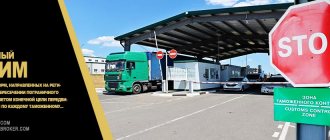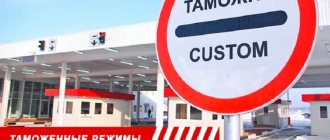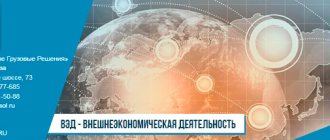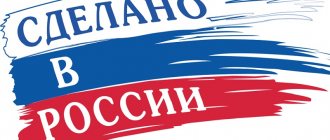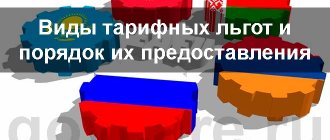The government implements a policy within which foreign economic relations are regulated. It includes various methods and tools. One of them is the provision of customs benefits. They apply to imported goods from certain countries. Benefits ensure an increase in the influx of products that are not produced in the Russian Federation or are produced in insufficient quantities.
The principle of preferential treatment
The practice of providing benefits began at the end of the last century. Since that time, the concept of “preferential treatment” began to be used. It assumes more favorable conditions than usual for products coming from any state. The history of the development of preferences directly concerns the formation of colonies. They formed the basis for the creation of monopolistic systems. It occurred while limiting the foreign trade of the satellite states. The system of customs benefits spread especially widely in the territories belonging to Holland, Belgium, England and France.
For these states, colonies acted as one of the key sources of profit. Due to the fact that dependent territories, as a rule, exported raw materials that were freely sent to most markets, and the metropolitan countries sent finished products, the preferential regime was more beneficial for the latter. At the initial stage, therefore, the preferential system was used within the framework of interstate relations, in which each country retained its own “tariff individuality,” but at the same time stipulated relaxations for the other that did not apply to other states. Benefits were provided in the form of full or partial exemption from duties.
Characteristics of developing countries
- The standard of living of the population is very low.
- There is no middle class. Society is divided into the rich and the very poor. The incomes of the rich are many times greater than the incomes of ordinary citizens.
- There are no laws, so investors from abroad rarely invest their finances in the economies of countries.
- The financial, tax and banking systems are poorly developed.
- The control device does not work.
- Unemployment is constantly growing, so the population does not have a stable income.
- High birth and death rates.
- Small size and volume of the domestic market.
- Dependence on the developed countries of the world, which gives rise to the constant accumulation of external debts.
- Presence of specific socio-economic problems.
- The economy is subject to ideology, religion and the political system.
- Communal interests prevail, which is why civil society is either just beginning to develop or is completely undeveloped.
Developing countries have scientific and technical potential, but it is weak, which is why scientific areas, economics, and production practically do not develop. At the same time, many states have huge reserves of natural resources.
Developing countries liberated themselves from colonial rule in the sixties, so negative factors are still observed in the social, economic and political structure:
- Inability to independently cope with internal economic problems that had previously been solved by the metropolitan countries.
- There are no democratic institutions, which is why political culture is just beginning to develop. The country's leaders in their rule rely not on various bodies and institutions, but on the army and police.
- Corruption and bribery are widespread.
- Constant wars, interethnic conflicts.
- Formation of a self-isolating economic model of a centralized type. It is not market-oriented and does not take into account the characteristics of the global economy, its trends and key changes.
Corruption index in various countries
In many ways, a similar situation in third world countries is due to the fact that in the eighties the Soviet Union and the CMEA states invested money in the construction of metallurgy and heavy industry facilities. The peculiarities of the geographical location of developing countries and their specificity were not taken into account. Therefore, an imbalance arose in them, and economies became completely dependent on developed countries.
Normative base
The preferential regime operates on the basis of an Agreement establishing unified rules by which the origin of products of developing countries is determined when providing benefits. This document was signed by Czechoslovakia, Poland, the USSR, Hungary and Bulgaria in 1980. In 1993, the State Customs Committee No. 01-12/532 was adopted. In accordance with it, today preferential goods are subject to the procedure for determining the state of origin and applying import tariff rates to them. Key provisions relating to the payment of duties and the provision of benefits are defined in Federal Law No. 5003-I.
Characteristic
In accordance with Federal Law No. 5003-I, preferential treatment involves special preferential conditions provided by one country to another without extending to third countries. It is implemented through exemptions from duties, reductions in their rates, or the establishment of quotas for the movement of relevant products. Tariff benefits are provided unilaterally or reciprocally during the implementation of the state trade policy of the Russian Federation in relation to products transported across the country's border. They are provided in the form of a refund of previously paid duties, exemptions from them, reductions in rates, or the establishment of appropriate quotas. For this system to take effect, a foreign trade contract must be signed. It specifies the relevant preferential conditions and the rules for their provision.
Classification Features
Ratings of leading countries with market economies are mainly compiled based on the goals of the organization. Among other features of the formation of the top 10 countries with emerging markets are the following:
- Incomplete data provided by governments to various committees on the state of the economy.
- Late submission of information.
- Incorrect assessment of the funding status of a particular project.
- Incomplete statistical data on mortality, fertility, demographic situation.
- Lack of accurate figures on the poverty line and problems with migrants.
- Subjective assessment of ongoing reforms.
The World Bank places its main emphasis on the following points:
- How poor are the citizens of a particular country.
- In what direction is the development of the most urbanized cities going?
Developed countries on the world map
The UN evaluates other aspects:
- Production of essential goods and services.
- Poverty level.
- How entrepreneurship develops.
- Social insurance and protection system.
- State of the financial market.
- The situation of the banking system.
- Ecological problems.
- Trends in demographic and social spheres. Fertility and mortality.
- GDP level.
- Level of investment and lending to projects and various economic sectors.
All these indicators are necessary to get a complete and comprehensive picture for each region, to highlight the share of developing and capitalist countries in it, choosing the largest, industrially developed and quite promising ones.
You can find out about the level of economic development of countries around the world by following this link.
We recommend watching the video: 10 developed countries of the world.
Most African, Asian and Latin American countries are usually classified as developing, or third world countries (as they are called in literature and analytical reports). They are connected among themselves by common features of historical development, features of the socio-economic and political structure.
Countries in Asia, Latin America or Africa have other common features:
- All of them were colonies of European states.
- A multi-structure and contradictory nature has emerged in the development of industry, production, and agriculture.
- “Population explosion”, due to which the annual population growth is higher than in other regions.
- The rapid increase in population has confronted governments with acute social and economic problems. We need to fight illiteracy, high mortality, poverty, below-average earnings, problems in the domestic market, industry and the agricultural sector.
Products
Tariff preferences are provided on the territory of Russia in accordance with Art. 36 Federal Law No. 5003-I. They apply to products:
- Coming from developing countries, users of the national preferential system of the Russian Federation. Products are taxed at a rate of 75% of the current customs tariff.
- Coming from least developed countries benefiting from the relevant scheme. In this case, the products are exempt from duties.
- Originating from countries that are forming an FTA, a Customs Union with Russia, or have signed agreements whose purpose is their formation.
TARIFF PREFERENCES IN THE EAEU
| | | Regulations on the conditions and procedure for applying the unified system of tariff preferences of the Eurasian Economic Union |
| | | |
| | | Lists of developing and least developed countries |
| | | |
| | | List of preferential goods |
| | | |
| | | Agreement on Rules for Determining the Origin of Goods from Developing and Least Developed Countries |
| | | |
| | | EAEU Treaty (part) |
| |
Source – FCS website
2. The customs authority makes a decision on the country of origin of goods and (or) the provision of tariff preferences based on the results of monitoring the correctness of determining the country of origin of goods in the form and in the manner determined by the federal executive body authorized in the field of customs affairs.
The Federal Customs Service received a complaint from U LLC against the customs decision to cancel tariff preferences in relation to the declared goods.
The applicant, with reference to the Protocol on Amendments and Additions to the Agreement on the Rules for Determining the Origin of Goods from Developing and Least Developed Countries dated December 12, 2008, approved by the decision of the Customs Union Commission dated September 23, 2011 No. 780, indicates that the basis for the abolition of preferences is either the receipt information from the authorized bodies of the beneficiary country that the certificate was not issued, canceled (revoked) or issued on the basis of invalid, unreliable information or incomplete documents and (or) information, or failure to receive such a response within 6 months. However, such a request was not sent by customs to the competent authorities of the beneficiary country. In addition, the applicant considers the customs decision to be unlawful, since it was made within a time frame that did not allow U LLC to restore the preferential treatment.
During the consideration of the complaint of U LLC, the following was established.
In order to confirm the country of origin of goods, when declaring them, LLC “U” was presented with a certificate of origin of goods in form “A”. The goods are released in accordance with the customs procedure for release for domestic consumption with the payment of a customs duty amounting to 75 percent of the import customs duty rate of the Unified Customs Tariff of the Customs Union, approved by decision of the Council of the Eurasian Economic Commission dated July 16, 2012 No. 54 (from January 1, 2015 . in connection with the entry into force of the Treaty on the Eurasian Economic Union of May 29, 2014, the concept “Customs Union” used in international treaties is understood as the “Eurasian Economic Union”).
In accordance with Articles 99, 111 of the Customs Code of the Customs Union, as part of the selective control of the validity of decisions made on the country of origin of goods and (or) the provision of tariff preferences, the higher customs authority established that the original certificate of origin of goods in form “A” was filled out improperly, namely The seal imprint in column 11 of the certificate is unreadable and blurred.
The certificate was sent by customs for subsequent verification by the Federal Customs Service of Russia. Based on the results of the inspection, the Federal Customs Service of Russia sent information about the improper completion of the certificate of origin of goods of form "A" and its non-compliance with the Requirements for the preparation of declarations-certificates of the origin of goods in form "A", contained in Appendix No. 2 (hereinafter referred to as the Requirements) to the Determination Rules origin of goods from developing and least developed countries that are users of the unified system of tariff preferences of the Customs Union (hereinafter referred to as the Rules), approved by the Agreement between the Government of the Russian Federation, the Government of the Republic of Belarus and the Government of the Republic of Kazakhstan dated 12.12.2008.
In this regard, customs decided to refuse to provide tariff preferences in relation to the goods declared by U LLC, of which the applicant was notified.
Confirmation of the country of origin of goods is carried out in accordance with the norms of paragraph 2 of Article 58, Article 59, paragraph 1 of Article 61 and paragraph 1 of Article 62 of the Customs Code of the Customs Union.
Tariff preference means an exemption from import customs duties in respect of goods originating from countries that, together with the Russian Federation, form a free trade zone or have signed agreements aimed at creating such a zone, or a reduction in the rates of import customs duties in respect of goods originating from developing or least developed countries using the unified system of tariff preferences of the Customs Union (the provisions of Article 74 of the Customs Code of the Customs Union and Article 36 of the Law of the Russian Federation of May 21, 1993 No. 5003-1 “On the Customs Tariff”).
In accordance with paragraph 3 of Article 37 of the Treaty on the Eurasian Economic Union (signed in Astana on May 29, 2014) (hereinafter referred to as the Treaty) for the purpose of providing tariff preferences for goods imported into the customs territory of the Union from developing or least developed user countries unified system of tariff preferences of the Union, the rules for determining the origin of goods from developing and least developed countries established by the Commission of the Customs Union are applied.
Based on Article 36 of the Treaty, in order to promote the economic development of developing and least developed countries, the Union, in accordance with this Treaty, may provide tariff preferences in respect of goods originating from developing countries - users of the unified system of tariff preferences of the Union and (or) least developed countries - users of the unified system of tariff preferences of the Union.
In relation to preferential goods imported into the customs territory of the Union, originating from developing countries - users of the unified system of tariff preferences of the Union, import customs duty rates are applied in the amount of 75 percent of the import customs duty rates of the Unified Customs Tariff of the Eurasian Economic Union.
For the purposes of implementing the provisions of Article 36 of the Treaty, before the entry into force of the decision of the Customs Union Commission establishing the conditions and procedure for applying the unified system of tariff preferences of the Union in relation to goods originating from developing countries and (or) least developed countries, the Protocol on the unified system of tariff preferences of the Customs Union is applied Union dated December 12, 2008.
Until the entry into force of the decision of the Customs Union Commission establishing the rules for determining the origin of goods provided for in paragraph 3 of Article 37 of this Treaty, the Agreement on the rules for determining the origin of goods from developing and least developed countries dated December 12, 2008 shall apply.
In accordance with the Protocol on the Unified System of Tariff Preferences of the Customs Union dated December 12, 2008, the list of developing countries - users of the system of tariff preferences, the list of goods originating and imported from developing and least developed countries, upon import of which tariff preferences are provided, are approved by the Commission of the Customs Union.
These lists were approved by the decision of the Interstate Council of the Eurasian Economic Community dated November 27, 2009 No. 18 and the decision of the Customs Union Commission dated November 27, 2009 No. 130 “On the unified customs and tariff regulation of the customs union of the Republic of Belarus, the Republic of Kazakhstan and the Russian Federation.”
According to these lists, goods originating from developing countries and least developed countries, the import of which are granted tariff preferences, include, among other things, goods of group XX of the Commodity Nomenclature for Foreign Economic Activity of the Eurasian Economic Union “ name of goods
”, and the list of developing countries - users of the system of tariff preferences of the Customs Union includes “
Country to which the certificate was issued
”.
According to the Rules, in order to certify the origin of goods from a developing or least developed country that is subject to a preferential tariff regime, the person moving the goods submits a declaration - a certificate of origin of goods in form "A", which is filled out in accordance with the Requirements for the preparation of declarations - certificates of origin of goods according to form “A”.
Based on the materials of the complaint, violations of the execution of column 11 of the certificate of origin of goods in form “A” were identified by customs and the Federal Customs Service of Russia as a result of a visual examination and comparison of the actual completion of columns of the certificate with the rules specified in the Requirements.
Thus, based on the Requirements, column 11 of the certificate of origin of goods in form “A” must contain data on the date and place of certification of the certificate, the name and seal of the authorized body of the beneficiary country, as well as the signature of an official of the said body. The seal must have a clear imprint, allowing, if necessary, identification for its authenticity.
The presence of a fuzzy seal imprint in column 11 of the certificate of origin of goods in form “A” is a violation of the Requirements.
In accordance with Section VIII of the Rules, a certificate may be invalidated in cases where:
no response has been received within 6 months regarding the requested certificate from the competent authorities of the country of export or country of origin of the goods;
there is confirmed information from the competent authorities of the country of export that the certificate was not issued (falsified) or was issued on the basis of invalid documents and (or) false information:
based on the results of research carried out by the customs authorities of the country of import, and (or) based on information received from requests sent to the competent authorities of the country of export or country of origin of the goods, it was revealed that the certificate was issued in violation of the requirements established by the Rules.
Carrying out additional research and inquiries to the competent national authorities of the country that certified the submitted certificate to confirm the presence of the above circumstances visually is not required in accordance with the Rules.
In addition, in accordance with paragraph 4 of Article 61 of the Customs Code of the Customs Union, if the certificate of origin of goods is issued in violation of the requirements for its execution and (or) completion established by the customs legislation of the Customs Union, the customs authority independently makes a decision to refuse to consider such a certificate as grounds for granting tariff preferences.
Thus, the customs had grounds for carrying out verification activities in relation to the specified certificate of origin of goods, declaring it invalid and making a decision to refuse to provide tariff preferences in relation to the goods declared by U LLC.
The applicant’s reference to the Protocol on Amendments and Additions to the Agreement on the Rules of Determining the Origin of Goods from Developing and Least Developed Countries dated December 12, 2008, approved by decision of the Customs Union Commission dated September 23, 2011 No. 780, is untenable due to the fact that the internal state approval procedures the said Protocol has not been completed and it has not been signed. Accordingly, the provisions of this Protocol are not applicable.
The argument in the complaint that the controversial decision was made within a time frame that did not allow U LLC to restore the preferential treatment is untenable due to the fact that, in accordance with Article 99 of the Customs Code of the Customs Union, customs authorities carry out customs control after the release of goods for 3 (three) years from the date the goods are under customs control. At the same time, this period is not made dependent on the possible financial risks of participants in foreign economic activity and the achievement of business goals.
At the same time, despite the fact that the above arguments of the applicant were not confirmed, the complaint of LLC “U” was satisfied on the following grounds.
In accordance with subparagraph 31 of paragraph 1 of Article 4 of the Customs Code of the Customs Union, customs control is understood as a set of measures carried out by customs authorities, including using a risk management system, in order to ensure compliance with the customs legislation of the Customs Union and the legislation of the member states of the Customs Union.
According to paragraph 1 of Article 94 of the Customs Code of the Customs Union, when carrying out customs control, customs authorities proceed from the principle of selectivity and are limited only to those forms of customs control that are sufficient to ensure compliance with the customs legislation of the Customs Union and the legislation of the member states of the Customs Union, control over the implementation of which is entrusted to the customs authorities .
The object of customs control, in accordance with subparagraph 2 of paragraph 2 of Article 95 of the Customs Code of the Customs Union, is the customs declaration, documents and information about goods, the presentation of which is provided for by the customs legislation of the Customs Union.
Paragraph 1 of Article 98 of the Customs Code of the Customs Union imposes on the declarant and persons carrying out activities in the field of customs affairs and other interested parties the obligation to submit to the customs authorities the documents and information necessary for carrying out customs control.
By virtue of Article 99 of the CU Customs Code, customs control after the release of goods is carried out in the forms and procedures established by Chapters 16 and (or) 19 of the CU Customs Code.
Article 110 of the Customs Code of the Customs Union establishes a list of forms of customs control, which includes, among other things, verification of documents and information, as well as customs inspection.
The purpose of checking documents and information submitted during customs operations, defined in paragraph 1 of Article 111 of the Customs Code of the Customs Union, is to establish the reliability of information, the authenticity of documents and (or) the correctness of their filling and (or) execution.
In accordance with paragraph 2 of Article 111 of the Customs Code of the Customs Union, verification of the reliability of information provided to customs authorities when performing customs operations is carried out by comparing them with information obtained from other sources, analyzing customs statistics, processing information using information technology, as well as other methods, not prohibited by the customs legislation of the Customs Union.
The procedure for checking documents and information after the release of goods and (or) vehicles was approved by Order of the Federal Customs Service of Russia dated August 25, 2009 No. 1560 (registered by the Ministry of Justice of Russia on November 20, 2009, No. 15262).
According to subparagraph 2 of paragraph 7 of the said Procedure, one of the areas of verification is the correctness of determining the country of origin of goods. Clause 25 of this Procedure establishes that the results of the inspection are documented in an act of verification of documents and information after the release of goods and (or) vehicles. The end date of the inspection is the date of signing the act.
In accordance with paragraph 1 of Article 122 of the Customs Code of the Customs Union, the purpose of customs inspections by customs authorities is to ensure that persons comply with the requirements established by the customs legislation of the Customs Union and the legislation of its member states.
Paragraphs 10 – 12 of Article 122 of the Customs Code of the Customs Union establish that the procedure for conducting a customs inspection is determined by Chapter 19 of the Customs Code of the Customs Union, the results of a customs inspection are documented in accordance with the legislation of the member states of the Customs Union, the procedure for making decisions based on the results of a customs inspection is determined by the legislation of the member states of the Customs Union .
Parts 1, 5 of Article 178 of the Federal Law of November 27, 2010 No. 311-FZ “On Customs Regulation in the Russian Federation” (hereinafter referred to as the Federal Law on Customs Regulation) stipulate that the results of a customs inspection are formalized by a desk customs inspection report or an on-site customs inspection report. checks. In case of detection of non-payment or incomplete payment of customs duties and taxes on the basis of a customs inspection report, the head (deputy head) of the customs authority that conducted the inspection, or a person authorized by him, simultaneously makes the appropriate decision (relevant decisions) in the field of customs affairs, if such a decision is made (such decisions) is within its competence.
In accordance with Article 110 of the Federal Law on Customs Regulation, customs authorities monitor the correctness of determining the country of origin of goods in order to ensure compliance with customs tariff and non-tariff regulation measures in cases where the application of such measures depends on the country of origin of goods, before and after the release of goods.
Based on the results of monitoring the correctness of determining the country of origin of goods, the customs authority makes a decision on the country of origin of goods and (or) the provision of tariff preferences in the form and manner determined by the federal executive body authorized in the field of customs affairs.
If, in the course of monitoring the correctness of determining the country of origin of goods by the customs authority, it is discovered that the conditions for the provision of tariff preferences established by the customs legislation of the Customs Union are not met, the customs authority, in the prescribed manner, makes a decision to refuse to provide tariff preferences.
The procedure for making decisions on the country of origin of goods and (or) granting tariff preferences (hereinafter referred to as the Procedure) was approved by order of the Federal Customs Service of Russia dated August 2, 2012 No. 1565 (registered by the Ministry of Justice of Russia on August 27, 2012, reg. No. 25268).
In accordance with paragraphs 19, 21 of the Procedure, if, based on the results of customs control carried out after the release of goods, it is discovered that the declared information about the country of origin of the goods is unreliable, including if the declared information about the country of origin of the goods is based on criteria other than those used provided for by international treaties of the member states of the Customs Union regulating the rules for determining the country of origin of goods, or that the conditions for the provision of tariff preferences provided for by the customs legislation of the Customs Union are not met, the authorized official makes a decision in the form in accordance with Appendix No. 1 to the said order.
Thus, the basis for making a decision on the country of origin of goods and (or) granting tariff preferences is the establishment of the above facts based on the results of customs control. At the same time, based on the provisions of paragraph 22 of the Procedure, this decision is made during customs control after the release of goods in the form of verification of documents and information or customs verification after registration of the verification results.
From the materials on the complaint it follows that the requirements of Articles 111, 122 of the Customs Code of the Customs Union and the Procedure approved by Order of the Federal Customs Service of Russia dated August 2, 2012 No. 1565 were not met by customs, the results of customs control were not recorded in the relevant acts. Accordingly, the procedure for making the appealed decision was violated.
Under such circumstances, the customs decision to cancel tariff preferences in relation to the goods declared by U LLC was canceled by the Federal Customs Service of Russia.
Specifics
Over the past few years, the preferential system has expanded significantly and become more complex. A legislative framework has appeared in the Russian Federation to ensure its regulation. Russia has created its own autonomous scheme for providing benefits to developing countries that have signed a foreign trade contract. According to Art. 36 of the above Federal Law, the Government periodically reviews the current scheme. This happens at least once every 5 years. In addition, annual revision of the current system is allowed. In accordance with the government decree, it is carried out on the basis of a reasoned proposal from the Ministry of Foreign Affairs and the Ministry of Foreign Economic Relations.
Problems
The current trade policy is characterized by the widespread use of preferential schemes. They act as the initial stage of the formation of integration associations and contribute to solving various problems. They relate to both economics and politics. The latter often encourages countries to form customs unions and free trade zones even when their effectiveness and profitability are not predetermined. For geopolitical reasons, preferential schemes are beginning to be created, which, if they bring the desired result, will only be in the distant future.
Criteria for classifying states by level of economic development
There are several approaches that allow you to assign a country to a specific group. The main classifications include the following:
- Socio-economic, used during the Cold War by Soviet economists. The leader of the first group (capitalist countries) was the United States, the largest state around which Western European countries gradually began to unite. According to this approach, the Soviet Union was the largest in the second group (socialist states). Under the influence of the USSR, the world socialist system and market were formed, which collapsed in the early nineties. The third group included the states of Africa and Asia. The socio-economic classification is no longer used because it no longer corresponds to the development trends of the economies of the world powers and does not take into account many parameters.
- By level of development: developing and developed. The first included countries of the former socialist camp, as well as those where socialism is the ultimate goal of state building.
- Development of the market economy. This approach allows us to distinguish three groups: developed, those with a transitional type of economy, and developing. The UN Economic and Social Council uses this classification.
Competitive countries of the world
Recently, IMF experts decided to identify another type - economically advanced countries. These powers include:
- East Asian: Singapore, South Korea, Taiwan, Hong Kong.
- Cyprus.
- North American: Canada and USA.
- Western European: France, Britain, Italy, Germany.
- Some states of Eastern Europe and Central Europe that have become members of the EU.
The number of developing countries changes every year. If we consider the economic characteristics of the countries of the world, then we take into account the GDP in developing countries, the direction of the economy, including industry, the presence of current knowledge-intensive areas, the level and quality of life of the population.
Read on our website: 15 countries with the best standard of living.
Legal options
The current GATT/WTO norms, through which the use of preferential schemes are regulated, are quite strict in nature. They contribute to the exclusion of “sensitive” sectors from preferential systems only for the period of the phased creation of a customs union or FTA. Its duration usually does not exceed 10 years. If we talk about preferences in relation to developing countries, then the legal possibilities in this area of regulation are quite wide. This is because the GATT extends the system beyond the scope of the general MFN obligation.
Improving the national scheme
Making adjustments to the current preferential system is possible only on the basis of developing a new model. It must take into account international obligations and global experience. At the same time, fairly broad interstate coverage should be maintained. When changing the national scheme, it is necessary to clarify the product range, value and mechanism for providing relief and waiver of benefits. This approach, according to analysts, will contribute to the subsequent improvement of the current model in Russia. This way, the preferential regime can turn into an even more effective regulatory tool. At the same time, it would comply with the provisions of the Common System and take into account the experience of other countries in this area. It is also important to pay attention to the issue of rules for determining the competitiveness of certain types of products from developing countries.
Structure of developing countries
Within countries that are developing, you can make your own division. To determine individual groups, the criteria are:
- structure of productive forces and production;
- economic development prospects;
- economic relations within and outside countries;
- the amount of external and internal debts;
- the presence or absence of inflationary growth/decline;
- conditions for the development of transnational corporations;
- the role played by small businesses in the formation of manufacturing and service industries.
Gold reserves in various countries
These parameters allow us to identify several types of countries with actively developing markets and economies:
- "Asian Tigers" of East and Southeast Asia and Latin America.
- Large Arab states and Asian countries that export oil and other minerals. Bahrain, Qatar, Libya, Iraq, and the United Arab Emirates are engaged in oil exports. Since each of them has a favorable economic and geographical location, plays an important, almost key role in the market of energy resources and media, the population is not poor and can save money.
- Developing countries with a high average GDP per capita. For example, in Guatemala or Colombia there is 1 thousand US dollars per person.
- Giant countries that have natural resources, vast territories, and a large population: India, Indonesia, Pakistan. They are developing thanks to investment projects from Europe and America. At the same time, other trends are observed: people often live below the poverty line, the GDP level is $300 per capita, and low rates of industrial development.
- Poor countries in Africa and Asia, for example, Bangladesh, Benin, Somalia, Ethiopia, Afghanistan. Despite the provision of loans, material and technical assistance, these developing countries are struggling to overcome their backwardness. The economy has a clear agrarian character, with pre-industrial forms of labor predominant in production. Communications with the outside world are either absent or very poorly developed.
In 2021, the number of countries that fall into the “developing” category has reached 132. All of them occupy a special place in the world economy, connected in different ways with capitalist countries, the world economic system and the market. Because of this, in such states a multi-structured economy has long been formed, dependent on developed and advanced countries.
Watch the video: salaries in different countries of the world.
